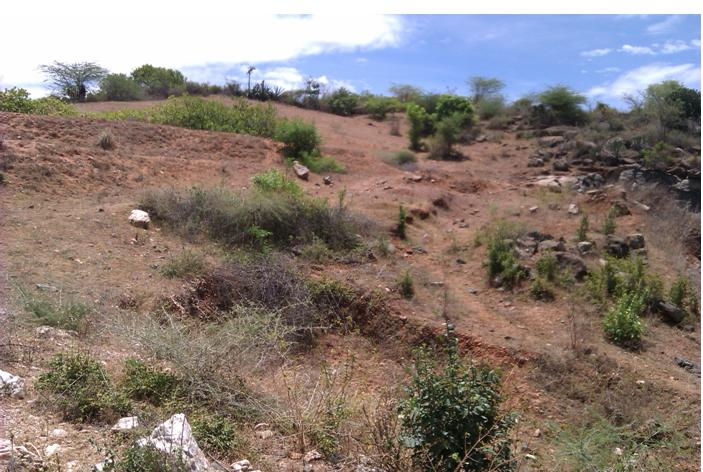QUARTZ REEF EXPLORATION STUDY USING WERI Series 2-D ERI TECHNIQUE SYSTEM IN VARASANADU, THENI (DISTRICT), TAMILNADU.
1Antony Ravindran. A and 2 H.Mohd Abdul Kadar Prabhu,
Abstract
Quartz reef is used for several applications in indusial purpose. 2-D Electrical Resistivity Imaging (ERI) investigation is suitable method to determine the geotechnical problems and it is used for the high quality of quartz reef bed thickness estimation. 2-D Electrical Resistivity Imaging with Wenner array was conducted within the Quartz reef area in Varasanadu, Theni district, Tamilnadu. The geology of the study area contains red soil, quartz reef and weathered gneissic rock which signify good target for 2-D electrical resistivity imaging techniques. The interpretation of the resistivity data along the profile shows the model resistivity pseudosection in quartz reef area. The highly resistivity zone of pseudosection with range of resistivity is 103 – 407 ohm.m at a depth of 4.06 m to 5.96m indicating the hard quartz reef rock.
Introduction
The quartz reef is a metamorphic rock. The study area is occupied an 10.64 acre along the northern margin of the Varasanadu, Theni district, Tamilnadu, (Fig. 1). In and around the quartz reef reef of hills quartz reef occur as a large folded elongated bands and the general trend of the quartz reef from NNW-SSE to NW-SE pyroxene to granulites are associated with quartz reef. Quartz reef is a decorative stone and may be used to produce ferrosilicon, industrial silica sand, silicon and silicon carbide.
Instrumentation and Methods
2-Dimensional Electrical Resistivity Imaging study involves measuring a series of constant separation traverse with the increase of electrode spacing with each successive traverse. The increase of electrode spacing increases the depth of penetration, so that apparent resistivity measured at various depths is used to construct a vertical contoured
section, displaying the variation of resistivities both laterally and vertically over the section,
Antony Ravindran and Ramanujam,2012 [2],[3], [4],[5]. WERI Series ,Multi-Electrode
Resistivity Imaging System is used for Field Survey for Quartz Reef Exploration
Study.W-3 Series Mainframe and WES 60, Multiplex Switcher (for Electrode) is deployed for
Investigation.




RESULT AND CONCLUSION
2D ELECTRICAL RESISTIVITY IMAGING PSEUDOSECTION

The profile (Fig.4) trends NW-SE direction to a length of 120 m. The upper part of the layer reveal as Quart reef deposits. The inversion resistivity values for these bed rock that ranges from 201 ohm.m to 27630 ohm.m. The resistivity values for intermediate layer of weathered Quart reef ranges from 28- 73.2 ohm.m. The lower part of the layer represents weathered composite gneiss with freshwater indicates low resistivity values that ranges from 0.6979 to 11.3 ohm.m indicates alluvium deposit [1] due to the palaeo river channel.

Quartz reef deposits in granulitic terrain at Varasanadu – Profile 1 .
The profile (Fig.5) trends to a length of 120m. The inversion displays the ranges of resistivity values from 7.45 Ohm.m to 27.4 Ohm.m indicating that weathered soil up to a depth of 6m. The intermediate second layer exhibits resistivity values that ranges from 41.4 ohm.m to 130 ohm.m represents the weathered Quartz reef reef. The high resistivity zone of pseudosection with range of resistivity is 200 to 10000 ohm.m at a depth 21.5m indicating the quartz reef rock intrusion in the granulitic terrain.
Conclusion
The ranges of resistivity values were identified in the field condition as rocky ridge greater than 250 Ohm.m; freshwater zone from 25 to 100 Ohm.m. The Continuous Vertical Electrical Sounding investigations held within the premises of Theni district point out fairly the uniform subsurface geological conditions. The 2-D electrical resistivity imaging psuedoseciton gives the details of subsurface variations at Quartz reef mining area. The electrical pseudosection along the profiles in the study shows three types of resistivity zones such as high quality quartz reef, intermediate or weathered quartz reef and low or gnessic rock 55%. From this 2-D ERI study Quartz reef trends NW- SE trend in the study area.
